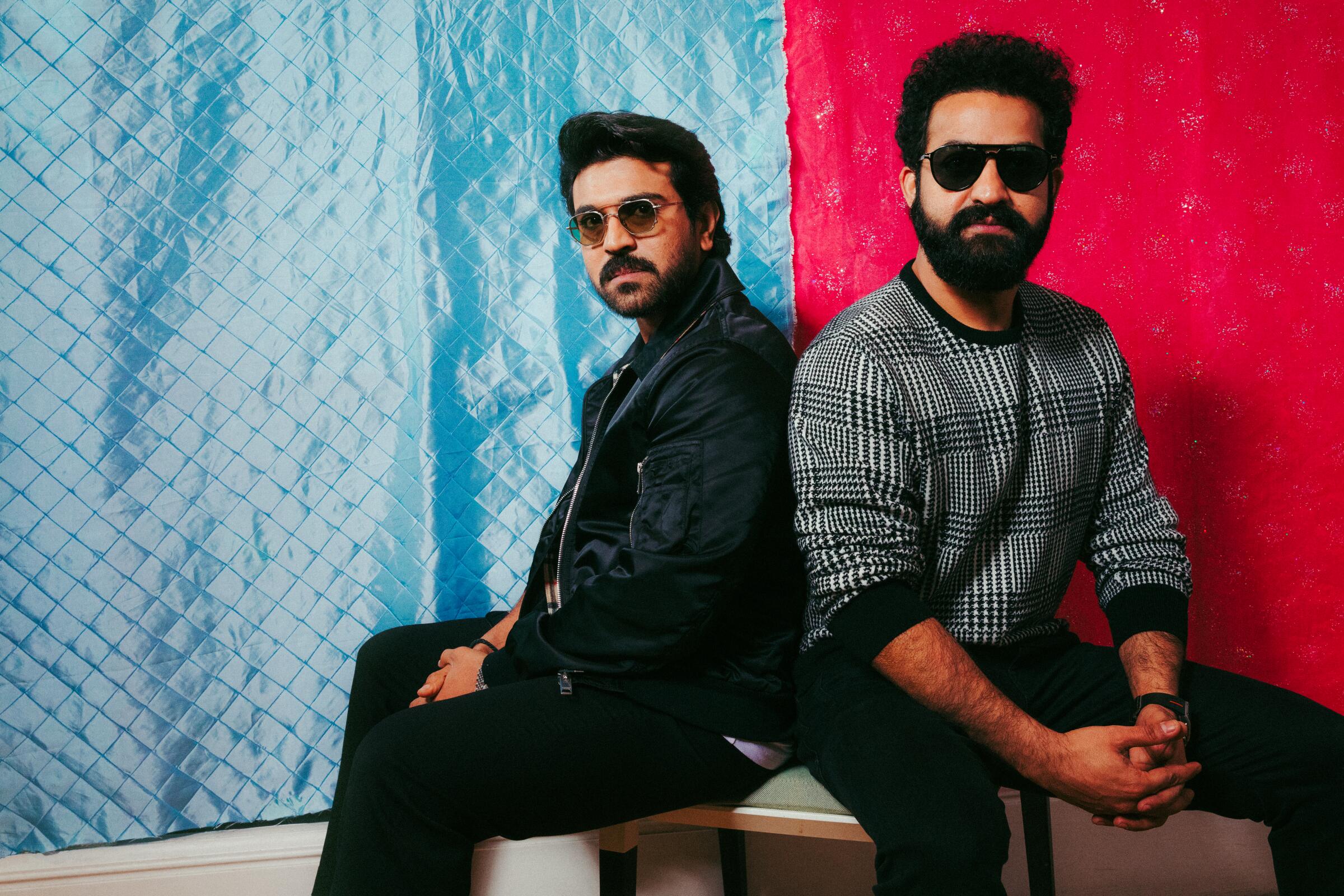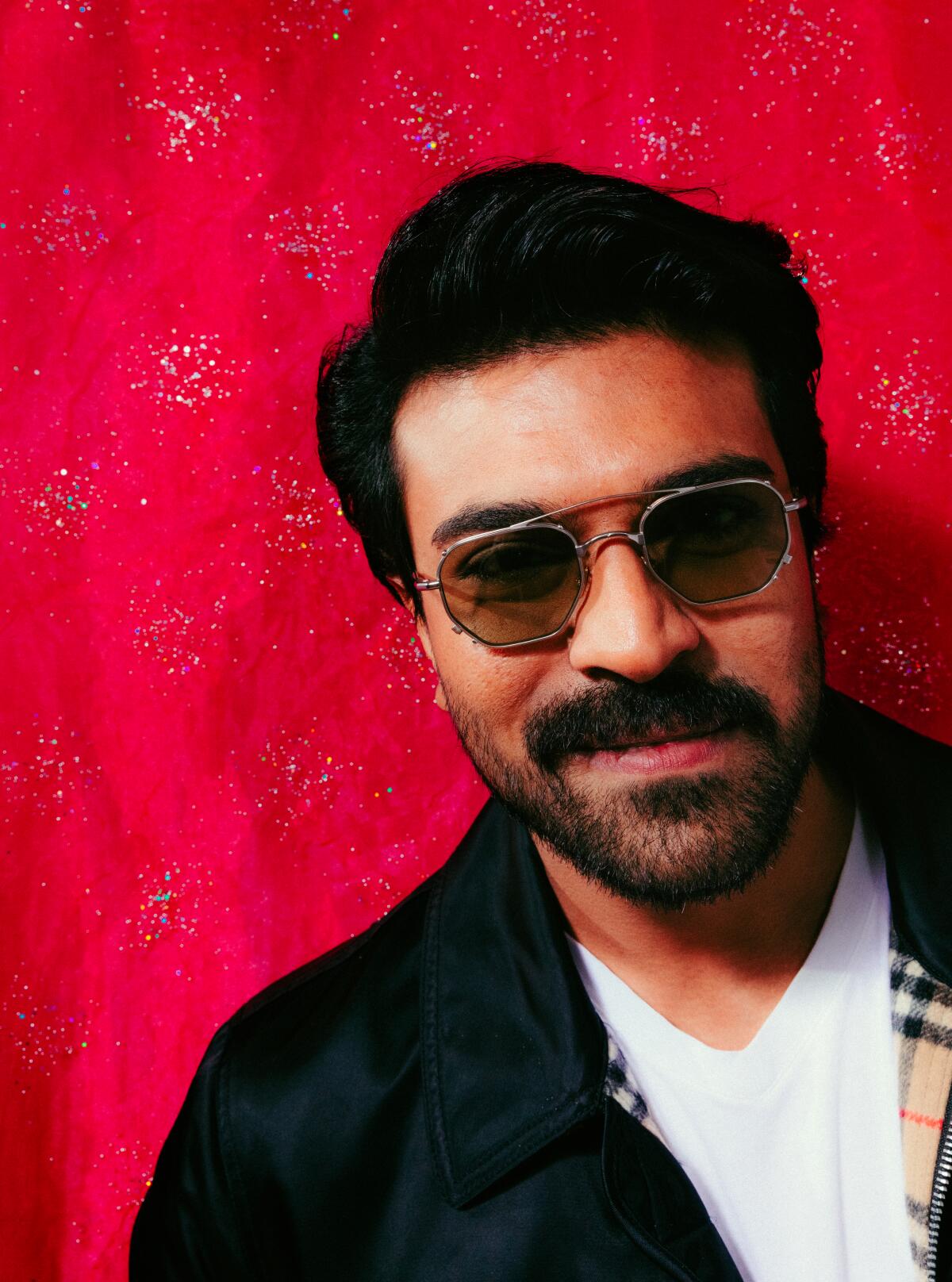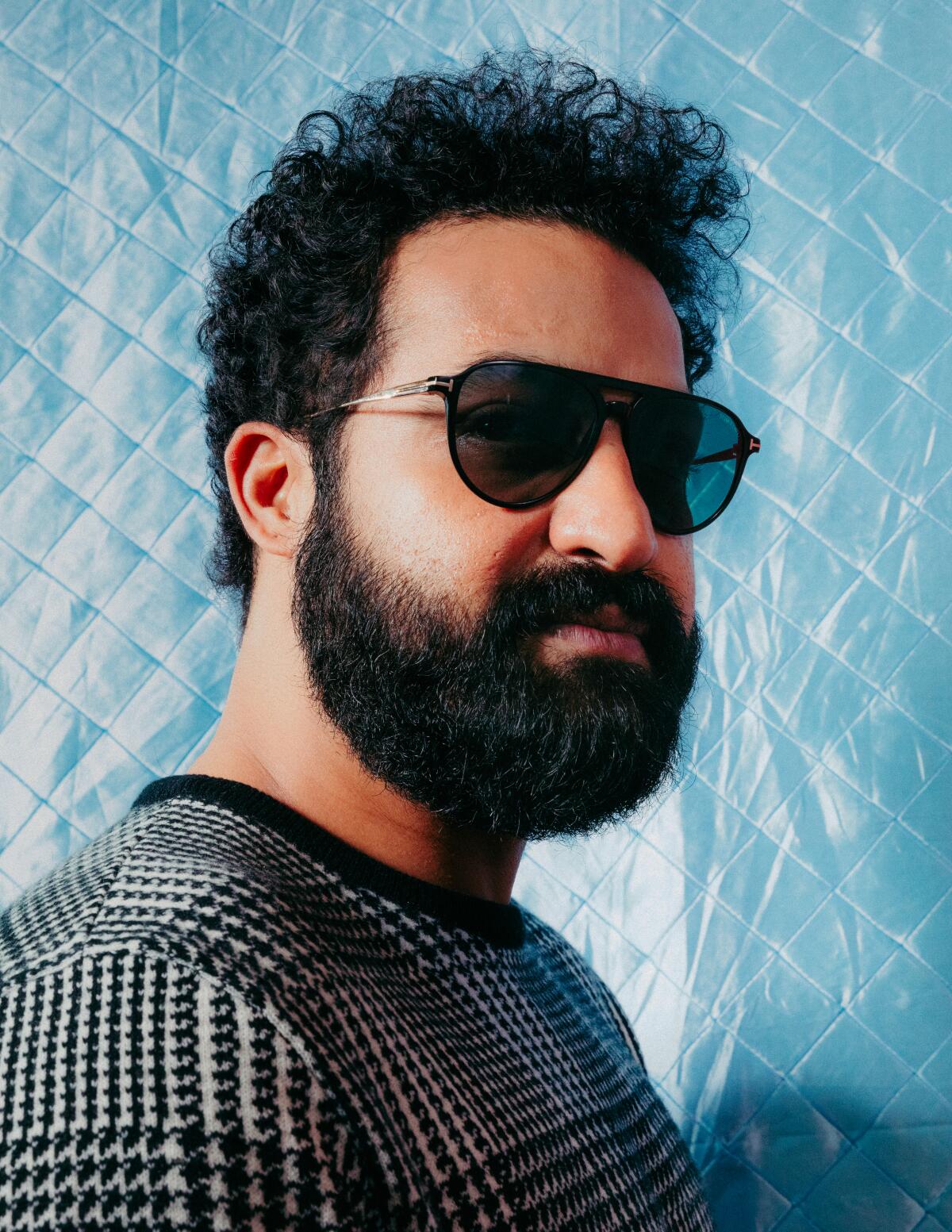Newsletter
Only good movies
Get the Indie Focus newsletter, Mark Olsen's weekly guide to the world of cinema.
You may occasionally receive promotional content from the Los Angeles Times.

When tickets for a screening of Indian action epic “RRR” at the TCL Chinese Theatre sold out within 98 seconds earlier this month, one of the film’s stars, N. T. Rama Rao Jr., turned to a culinary analogy from home to make sense of it: Maggi, an instant noodle brand popular in India that only requires two minutes to cook.
“That’s the fastest food you can actually cook back in India,” Rao explained during a recent interview with The Times. “This was faster than cooking a Maggi!”
The speed of the sellout is a measure of the fervor for director S.S. Rajamouli’s saga about two Indian revolutionary heroes, Komaram Bheem and Alluri Sitarama Raju, who team up against British colonial rule — fervor that has only intensified since the film’s first U.S. theatrical release last March.
While Indian films often find success beyond the country’s borders with diasporic South Asian audiences, “RRR” has specifically introduced the Telugu cinema industry, Tollywood, to scores of non-Indian Western viewers now under the spell of its over-the-top grandeur.
Bona fide A-listers back home, Rao and his co-star Ram Charan joined The Times — security guards in tow — at a Beverly Hills hotel a few days before the Golden Globe Awards, where “RRR” took home the original song trophy for the infectiously energetic “Naatu Naatu” and was also nominated for non-English-language picture.
And though social media reactions provided the actors an indication of the attention “RRR” has garnered abroad, it was not until last fall, after their positive reception during a visit to Japan and seeing videos of frenzied American fans applauding Rajamouli in Hollywood, that they fully understood the global reach of their Telugu-language blockbuster.

“RRR” has also had a seismic impact in India, where it has successfully blurred the lines among the country’s multiple film industries, which are largely separated by region and language.
“We have started calling it the Indian film industry, as opposed to dividing it into Bollywood, Tollywood or Kollywood,” said Rao.
“[Rajamouli] burned the ’woods,” added Charan. “And just made it one big united Indian film industry.”
To that end, both actors dubbed their own voices for multiple versions of “RRR” in the most prominent Indian languages: Telugu, Hindi, Tamil and Kannada.
“When an actor is performing and his voice is rendered to his expression, it only makes it better,” said Rao. “Rajamouli insisted on it to get an instant connection with the audiences who speak that language in that region,” added Charan.
S.S. Rajamouli’s period action epic has been a labor of love, box office sensation and global success story. Next up? Academy Award contender.
Constantly finishing each other’s sentences, the two performers and longtime friends carry on the legacy of their forebears. Rao’s grandfather N. T. Rama Rao Sr. and Charan’s father, Chiranjeevi, were influential figures in Telugu cinema throughout the 20th century.
For a long time, their families were widely known as archrivals in politics, but that generational feuding has never interfered with the actors’ bond. “The whole concept of having a rivalry brought us together,” explained Charan. “The only path we could take was friendship because we were bored of [the] news of rivalry for more than three decades.”
It was during a practice session for a celebrity cricket match several years ago that the two began to transition from perpetual acquaintances to close confidants. Today they live in the same community just a few steps from each other in the city of Hyderabad.
“It’s simple physics,” Rao noted about his profound camaraderie with Charan.
“Opposite poles attract. Charan gets attracted to what he doesn’t have in him. And I get attracted to what I don’t attain in myself, so we look up to each other. It’s a support system. We complement each other, and we can share a few secrets that will never get out.”

Like fire and water, as their “RRR” characters are described, Rao admitted to being the more outwardly expressive of the two, while the quieter Charan exudes equanimity.
Casting two real-life friends with lived-in chemistry and organic rapport facilitated Rajamouli’s job. But despite the strength of the actors’ fraternal relationship, their desire to share the screen was not reason enough for them to agree to take part in “RRR.”
It’s uncommon, Charan noted, for major names from the same industry in India to agree to co-star — a result of people’s insecurities, egos and concerns that a dual project might undermine one or both of its stars. But the pair had absolute trust in Rajamouli.
“Not too many directors can give you the confidence to surrender to them,” said Charan. “We didn’t want to put our whole careers in jeopardy just for the fanciness of coming together because we are friends. There had to be a reason: the maker and the subject.”
Each of them had previously collaborated with Rajamouli. Rao first encountered him more than 20 years ago for the director’s 2001 feature directorial debut, “Student No: 1,” a coming-of-age romance. The two reunited for the 2003 action drama “Simhadri.” Charan entered Rajamouli’s universe as the hero in the lavish fantasy “Magadheera” in 2009 — a box-office hit and then the most expensive Telugu film of all time. (Rajamouli’s own “RRR” has now earned that title.)
The movie from S.S. Rajamouli boasts wild action sequences and a spectacular dance-off. How can the academy not embrace it?
“I always felt this man was not destined to make only films in Telugu or in India,” said Rao. “He is one of those rare phenoms who can travel the globe with his films. With each film, he’s only gotten better. I feel that ‘RRR’ was his plan of taking the West.”
Rao said Rajamouli’s wild ideas (mostly) no longer shock him. But he acknowledged that the filmmaker’s commitment to precision in the “Naatu Naatu” dance number was an exception. Although neither of the two stars found the steps uniquely difficult — they are both accomplished dancers — the strict synchronization posed a challenge.
Rehearsed and shot in Ukraine over the course of more than two weeks, the sequence is defined by the director’s obsession with capturing the characters’ unity in a physical manner: After every take, Rajamouli would sit in front of the monitor to check frame by frame that Rao‘s and Charan’s hands and legs were perfectly coordinated. (For another sequence, Rajamouli — who employs “a mini cricket team” of assistant directors, according to Charan — requested another take after one AD identified a single out-of-place background actor.)
“It’s not just about creating euphoria, but at that point, the story needed for the characters to be looked at as one person,” said Charan. “Our thoughts, our actions, everything should look like it’s just one person doing it, one person dancing.”
The actors speak of Rajamouli as a beloved tormentor, an artist who reciprocates his demands on others by first challenging himself to innovate.
“The pressure was not about playing these phenomenal historical characters,” said Rao. “The only pressure was, ‘Are we doing justice to what Rajamouli has written for us?’ ‘RRR,’ it’s just one man’s vision. We were a part of his vision.”

Asked about the criticism that “RRR” advances nationalist sentiments, the two emphasized the central fictitious bromance as the main theme — not politics.
“I would definitely beg to differ because what my director has made is a fiction movie about two unsung heroes, which the world needed to know about, in a period where India was under the rule of the British Empire,” said Rao.
Principal photography for “RRR” kicked off in 2018 and, in part because of the COVID-19 pandemic, didn’t wrap until 2021. In all, there were more than 270 shooting days, with a single sequence — in which the two friends fight it out amid wild animals and fiery explosions — occupying a whopping 65 nights.
Charan recalls the first day on set with Rao. When he asked Rajamouli what scene they would be working on that day, the director told him, “It’s just both of your characters meeting each other and shaking hands.” What he failed to mention is that the handshake would occur 60 feet off the ground as both actors hung on ropes like pendulums colliding.
The complete guide to home viewing
Get Screen Gab for everything about the TV shows and streaming movies everyone’s talking about.
You may occasionally receive promotional content from the Los Angeles Times.
Rajamouli tested the safety of the harness on himself first, which a cheeky Rao, who is afraid of heights and roller coasters, believes he does so the actors can’t complain.
“He knows both of us are difficult actors sometimes. We’d be like, ‘No, this cannot be done. It’s impossible,’” added Charan. “He would show us the video of him doing [it] multiple times, so we had no other way just to shut our mouths and do exactly what he said.”
The result of Rajamouli’s intense process, and the actors’ commitment to it, is a film that may lead all three to yet another new frontier: Hollywood. And Rao and Charan are prepared.
“We are just divided by time zones and a little bit of an accent,” said Rao. “Other than that, what an actor goes through in the West is exactly the same process as in the East.”
Their career journeys also lent special weight to their recent visit to Los Angeles, this time as invited guests to the Golden Globes for a nominated film.
“What makes us very proud is that a small industry from South India, Tollywood, and one movie called ‘RRR’ could open the gates to global cinema and bring us here,” said Rao.
“L.A. is the mecca of film, and to sit here today with a film like ‘RRR,’ it’s a proud moment for all of us,” said Charan. “We are not talking as two individuals. We are talking for 1.4 billion people who have really come together on a national level. ‘RRR’ has been embraced in such [a] way, and we are representing India. That’s something special. We won’t forget this.”
Only good movies
Get the Indie Focus newsletter, Mark Olsen's weekly guide to the world of cinema.
You may occasionally receive promotional content from the Los Angeles Times.